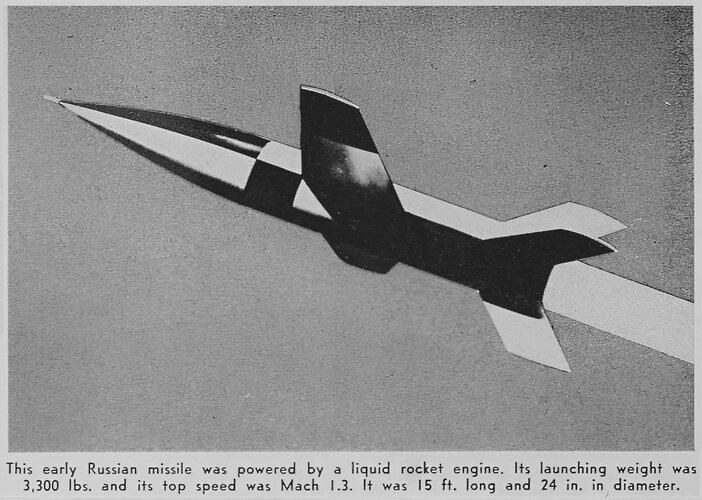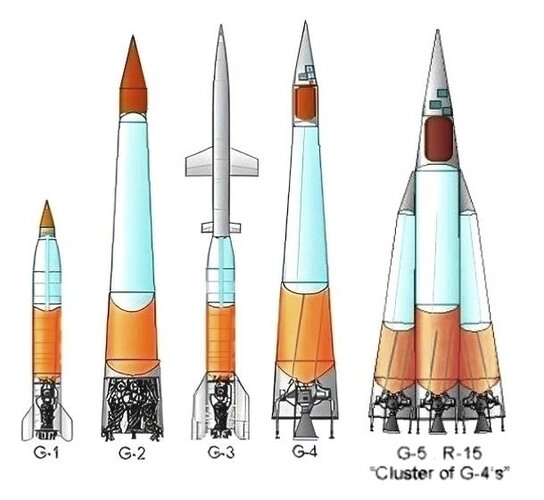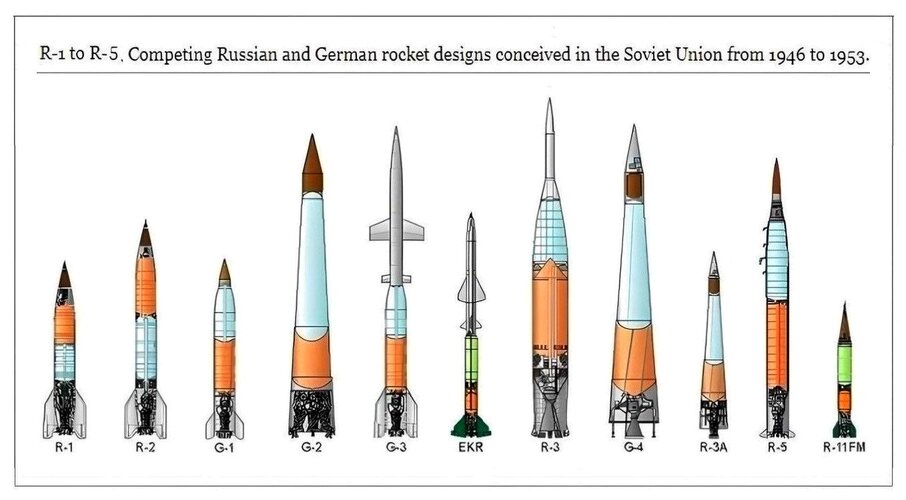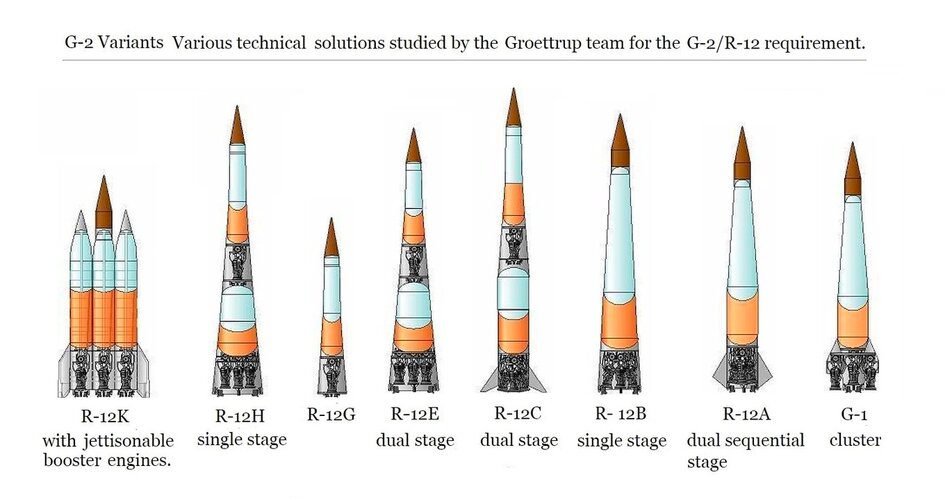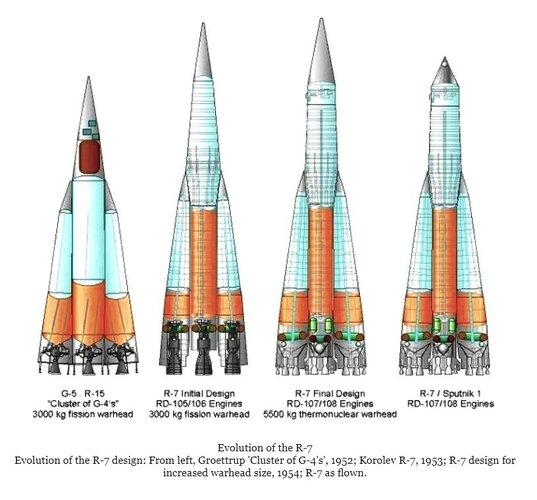klem
I really should change my personal text
- Joined
- 7 March 2015
- Messages
- 707
- Reaction score
- 1,532
The post-war dissection of German missile technology by the victorious powers opened the door to further developments and research in this field, and a race began on both sides to produce more powerful missiles. In this context, the first missiles developed from German weapons appeared in the Soviet Union. (An article entitled ‘Russia's guided missiles programme’ in the January 1957 issue of Missiles and Rockets talks about a series of Russian missiles and an article in https://www.globalsecurity.org/wmd/world/russia/missiles-early.htm), including the J-3 series, which is in fact an improved German V-2 winged missile. I have only found this image of the J-3 in the aforementioned article, which states that none of the models in the J series was supposed to have a range of more than 550 miles or a speed of more than 875 mph. In 1962, the J-3 would have had a range of 1450 miles at Mach 1.15.

